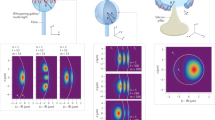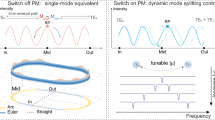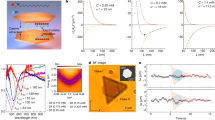Abstract
An optical microresonator is a micrometer-scale object that can confine light inside its body via total internal reflection at the boundary. In addition to well-established applications, including laser oscillators, optical sensors, and quantum memory, optical resonators have attracted renewed attention in chemistry and biology as minute and highly sensitive sensors that work in the environment and inside biological tissues and cells without any connected wires. Optical resonators should be functional for facilitating molecular interactions and biological compatibility, which is, however, challenging with conventional materials and processing techniques. In contrast, the authors have been tackling this issue by using supramolecular chemistry, which enables the assembly of optical resonators from chemically and biologically functional organic materials in solution. This article reviews our recent progress on the methodologies for making organic optical resonators and their emergent optical properties.
This is a preview of subscription content, access via your institution
Access options
Subscribe to this journal
Receive 12 print issues and online access
$259.00 per year
only $21.58 per issue
Buy this article
- Purchase on Springer Link
- Instant access to full article PDF
Prices may be subject to local taxes which are calculated during checkout





Similar content being viewed by others
References
Oraevsky AN. Whispering-gallery waves. Quantum Electron. 2002;32:377–400.
Siegman AE. Laser beams and resonators: the 1960s. IEEE J Sel Top Quantum Electron. 2000;6:1380–88.
Siegman AE. Laser beams and resonators: beyond the 1960s. IEEE J Sel Top Quantum Electron. 2000;6:1389–99.
He L, Özdemir ŞK, Yang L. Whispering gallery microcavity lasers. Laser Photon Rev. 2013;7:60–82.
Vollmer F, Yang L. Label-free detection with high-Q microcavities: a review of biosensing mechanisms for integrated devices. Nanophotonics. 2012;1:267–91.
Jiang X, Qavi AJ, Huang SH, Yang L. Whispering-gallery sensors. Matter. 2020;3:371–92.
Frustaci S, Vollmer F. Whispering-gallery mode (WGM) sensors: review of established and WGM-based techniques to study protein conformational dynamics. Curr Opin Chem Biol. 2019;51:66–73.
Fikouras AH, Schubert M, Karl M, Kumar JD, Powis SJ, Di Falco A, et al. Non-obstructive intracellular nanolasers. Nat Commun. 2018;9:4817.
Martino N, Kwok SJJ, Liapis AC, Forward S, Jang H, Kim HM, et al. Wavelength-encoded laser particles for massively multiplexed cell tagging. Nat Photonics. 2019;13:720–27.
Schubert M, Woolfson L, Barnard IRM, Dorward AM, Casement B, Morton A, et al. Monitoring contractility in cardiac tissue with cellular resolution using biointegrated microlasers. Nat Photonics. 2020;14:452–58.
Venkatakrishnarao D, Chandrasekar R. Engineering the self‐assembly of DCM dyes into whispering‐gallery‐mode μ‐hemispheres and Fabry–Pèrot‐type μ‐rods for visible–NIR (600–875 nm) range optical microcavities. Adv Opt Mater. 2015;4:112–19.
Venkatakrishnarao D, Mamonov EA, Murzina TV, Chandrasekar R. Advanced organic and polymer whispering‐gallery‐mode microresonators for enhanced nonlinear optical light. Adv Opt Mater. 2018;6:1800343.
Yamamoto Y, Yamagishi H, Huang JS, Lorke A. Molecular and supramolecular designs of organic/polymeric micro-photoemitters for advanced optical and laser applications. Acc Chem Res. 2023;56:1469–81.
Yamamoto Y, Kushida S, Okada D, Oki O, Yamagishi H. Hendra self-assembled π-conjugated organic/polymeric microresonators and microlasers. Bull Chem Soc Jpn. 2023;96:702–10.
Yamamoto Y. Spherical resonators from π-conjugated polymers. Polym J. 2016;48:1045–50.
Tanji N, Yamagishi H, Fujita K, Yamamoto Y. Nanoporous fluorescent microresonators for non-wired sensing of volatile organic compounds down to the ppb level. ACS Appl Polym Mater. 2022;4:1065–70.
Oki O, Kulkarni C, Yamagishi H, Meskers SCJ, Lin ZH, Huang JS, et al. Robust angular anisotropy of circularly polarized luminescence from a single twisted-bipolar polymeric microsphere. J Am Chem Soc 2021;143:8772–79.
Qiagedeer A, Yamagishi H, Hayashi S, Yamamoto Y. Polymer optical microcavity sensor for volatile organic compounds with distinct selectivity toward aromatic hydrocarbons. ACS Omega. 2021;6:21066–70.
Ihara Y, Yamagishi H, Lin C, Jhu CH, Tsai MC, Horie M, et al. Hydrothermal crosslinking of poly(fluorenylamine) with styryl side chains to produce insoluble fluorescent microparticles. Polym J. 2023;55:547–53.
Ihara Y, Yamagishi H, Naito M, Yamamoto Y. Machine learning of organic solvents reveals an extraordinary axis in Hansen space as indicator of spherical precipitation of polymers. Aggregate. 2023;4:e365.
Iwai K, Yamagishi H, Herzberger C, Sato Y, Tsuji H, Albrecht K, et al. Single-crystalline optical microcavities from luminescent dendrimers. Angew Chem Int Ed. 2020;59:12674–79.
Heah WY, Yamagishi H, Fujita K, Sumitani M, Mikami Y, Yoshioka H, et al. Silk fibroin microspheres as optical resonators for wide-range humidity sensing and biodegradable lasers. Mater Chem Front. 2021;5:5653–57.
Zhao S, Yamagishi H, Norikane Y, Hayashi S, Yamamoto Y. Optical control of aggregation‐induced emission shift by photoisomerizable precipitant in a liquid droplet microresonator. Adv Opt Mater. 2022;11:2202134.
Suharman, Heah WY, Yamagishi H, Yamamoto Y. Poly(lactic acid) stereocomplex microspheres as thermally tolerant optical resonators. Nanoscale. 2023;15:19062–68.
Qiagedeer A, Yamagishi H, Sakamoto M, Hasebe H, Ishiwari F, Fukushima T, et al. A highly sensitive humidity sensor based on an aggregation-induced emission luminogen-appended hygroscopic polymer microresonator. Mater Chem Front. 2021;5:799–803.
Yamagishi H, Fujita K, Miyagawa J, Mikami Y, Yoshioka H, Oki Y, et al. Pneumatically tunable droplet microlaser. Laser Photon Rev. 2023;17:2200874.
Takeuchi A, Heah WY, Yamamoto Y, Yamagishi H. Degradable optical resonators as in situ microprobes for microscopy-based observation of enzymatic hydrolysis. Chem Commun. 2023;59:1477–80.
Tanji N, Miyagawa J, Yamamoto Y, Nakashima T, Yamagishi H. Inclusion of dye in cyclodextrin for isotropically radiative robust droplet laser toward lens-free remote optical detection. Chem Lett. 2023;52:696–99.
Vinod Kumar A, Rohullah M, Chosenyah M, Ravi J, Venkataramudu U, Chandrasekar R. Amphibian-like flexible organic crystal optical fibers for underwater/air micro-precision lighting and sensing. Angew Chem Int Ed. 2023;62:e202300046.
Funding
JSPS, Grant-in-Aid for Early-Career Scientists JP22K14656. JST, ACT-X JPMJAX201J. The New Energy and Industrial Technology Development Organization (NEDO). Kato Memorial Bioscience Foundation.
Author information
Authors and Affiliations
Corresponding author
Ethics declarations
Conflict of interest
The author declares no competing interests.
Additional information
Publisher’s note Springer Nature remains neutral with regard to jurisdictional claims in published maps and institutional affiliations.
Rights and permissions
Springer Nature or its licensor (e.g. a society or other partner) holds exclusive rights to this article under a publishing agreement with the author(s) or other rightsholder(s); author self-archiving of the accepted manuscript version of this article is solely governed by the terms of such publishing agreement and applicable law.
About this article
Cite this article
Yamagishi, H. Supramolecular methodologies for the assembly of optical microresonators from functional organic materials. Polym J (2024). https://doi.org/10.1038/s41428-024-00925-6
Received:
Revised:
Accepted:
Published:
DOI: https://doi.org/10.1038/s41428-024-00925-6



